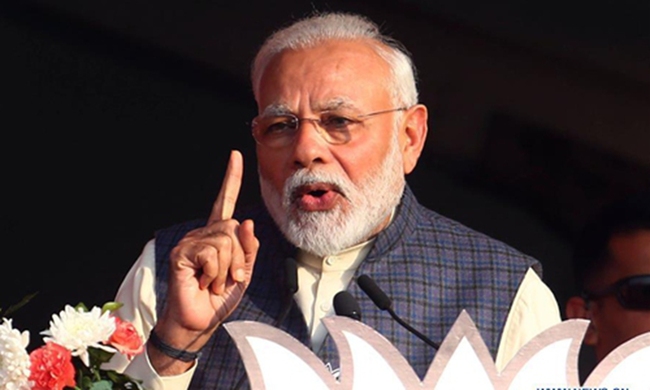
Indian Prime Minister Narendra Modi Photo: Xinhua
Similar patterns can be seen in foreign affairs when Modi's decade-long tenure has been entangled between implementing development agendas and promoting the ideology of Hindu nationalism. India's policies toward China and the US are obvious cases.
During his first term, Modi's China policies went through multiple adjustments, from engagement to confrontation, and then to easing tensions for closer economic cooperation. Since 2019, the Modi administration has made the border standoff with China a salient issue in his second term.
Observers believe that the Hindu nationalist ideology dictates a more assertive stance of India. To Indian decision-makers, resolving the border issue is established as the pre-condition to restoring the normalcy of bilateral relations, under which their conflicting policies have spilled over into India's economic, trade and cultural exchanges with China.
It is predicted that in his third term cautious changes might occur as, in April, in an exclusive review with Newsweek, Modi stated that he is willing to address the long-standing border issue with China and leave behind the abnormalities in bilateral interactions.
Indeed, peaceful and stable relations are crucial for both countries. Despite the strained relations, the total economic and trade volume between China and India has reached $118.4 billion in 2023, surpassing the $118.3 billion trade volume between the US and India. The resilience of India-China economic ties proves that the interests of both countries are intertwined, and blind confrontations serve neither side's interests.
Since Modi took office as India's Prime Minister in 2014, India has prioritized its ties with the US. In return, the US has actively downplayed its ideological differences with India and sought to woo India's support for its Indo-Pacific Strategy. The situation to some extent encourages India's diplomatic adventurism. In November 2023, the US Department of Justice released a verdict that it was discovered that the Indian intelligence agency had been planning assassinations in the US and Canada.
The trend is consistent with Hindu nationalist aspirations for India's status as a major power when in 2019 a massive election victory of the Modi-led BJP under Hindu nationalism platforms revitalized India's dream of returning to Hindu glory.
It is believed that in the post-election period, some right-wing radicals may argue that the electoral strategy of Hindu nationalist mobilization was not strong enough, costing the BJP votes, thus increasing the call to continue playing the populist card within the BJP.
To the Modi administration, India has reasons to work for the US if it cannot clean up the anti-India remnants in its own house. India is confident that the US will not jeopardize their relationship for the sake of so-called democratic values, especially when its top priority is to counter China's rise and the US strategic dependence on India can thus be utilized as a diplomatic asset to balance the US.
Ideological differences between India and the US nonetheless continue to ferment. Since April 2024, The Washington Post has published a series of articles exposing how India's intelligence agency, the Research and Analysis Wing, or RAW, is leading India's reverse ideological penetrations against the US.
How the US balances ideological differences with India and utilizes India as a vanguard against China will, to some extent, determine the direction of India-China relations. This can also be taken as a key indicator of observing how Modi will manage the tightrope of India-US and India-China relations.
The author is an associate professor at the Institute of International Studies, Fudan University. opinion@globaltimes.com.cn






